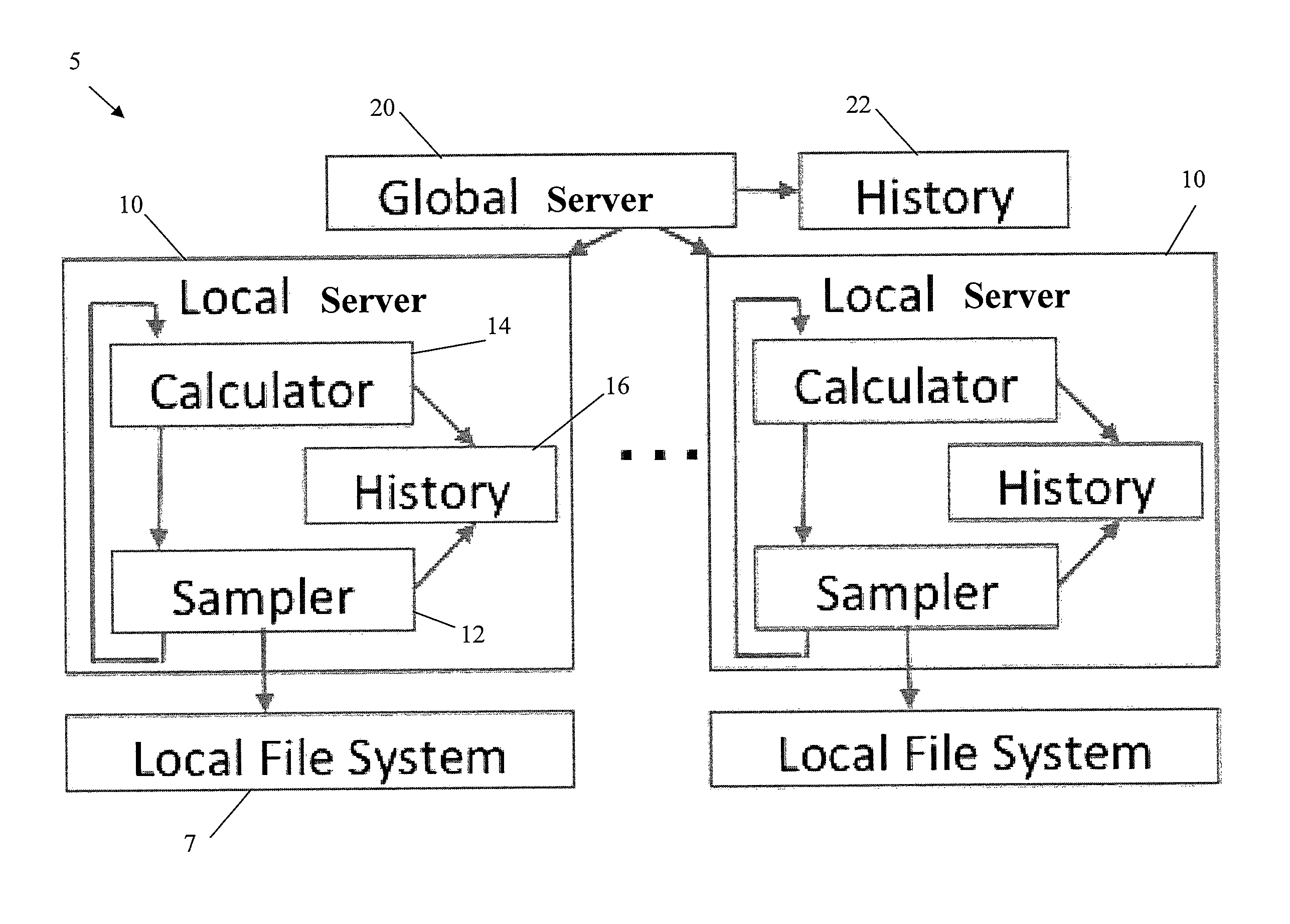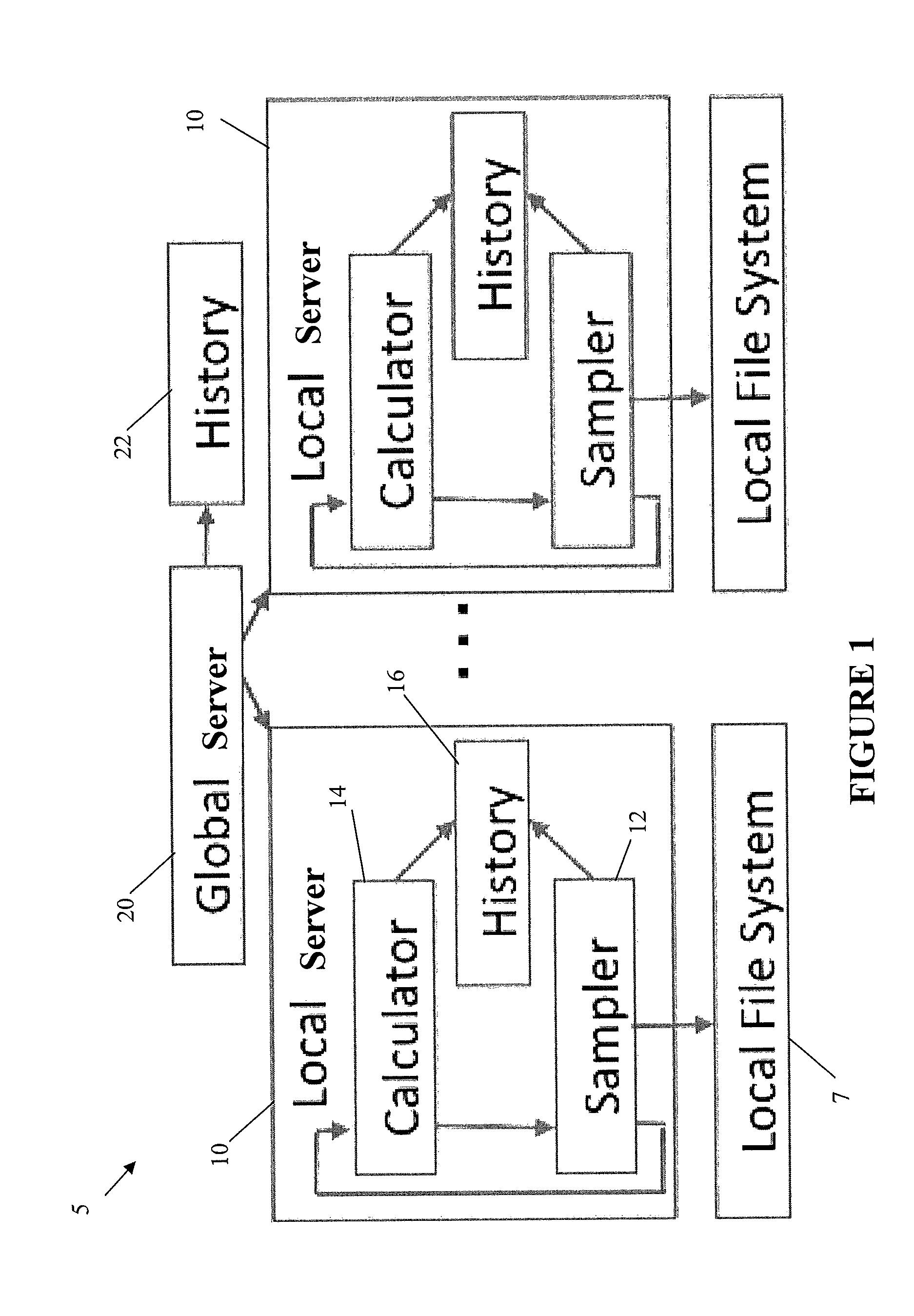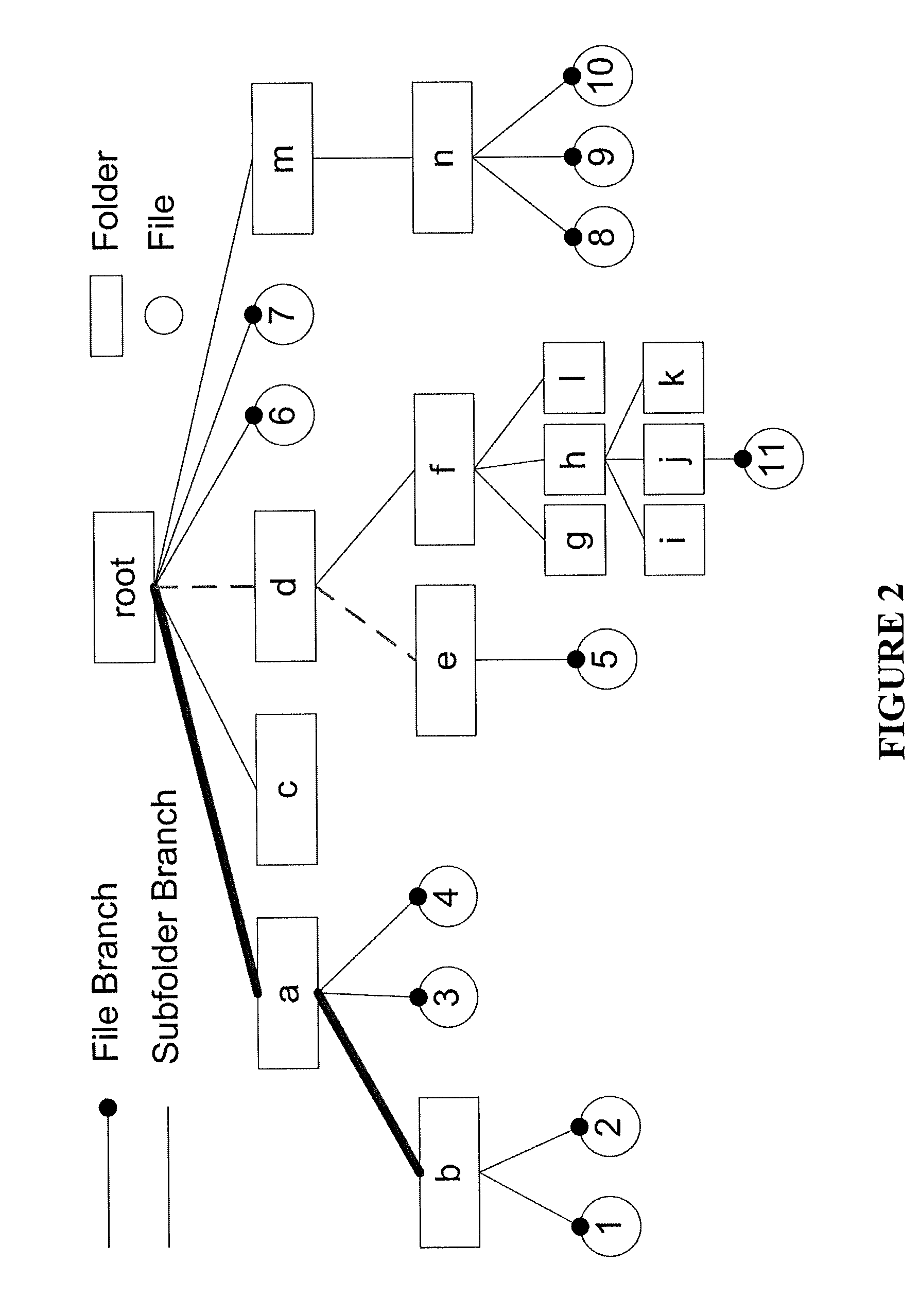Just-in-time analytics on large file systems
a file system and just-in-time technology, applied in the field of just-in-time analytics on large file systems, can solve the problems of lack of global view (i.e., high-level statistics), inability to perform just-in-time analytics, and inability to meet the needs of just-in-time analytics, so as to reduce error and overhead, reduce query processing errors, and achieve reliable results
- Summary
- Abstract
- Description
- Claims
- Application Information
AI Technical Summary
Benefits of technology
Problems solved by technology
Method used
Image
Examples
Embodiment Construction
[0025]In describing the preferred embodiments of the present invention illustrated in the drawings, specific terminology is resorted to for the sake of clarity. However, the present invention is not intended to be limited to the specific terms so selected, and it is to be understood that each specific term includes all technical equivalents that operate in a similar manner to accomplish a similar purpose. The analytical queries will be discussed, i.e., aggregate and top-k ones, with respect to non-limiting illustrative examples of the invention.
Aggregate Queries
[0026]In general, aggregate queries are of the form SELECT AGGR(T) FROM D WHERE Selection Condition, where D is a file system or storage device, T is the target piece of information, which may be a metadata attribute (e.g., size, timestamp) of a file or a directory, AGGR is the aggregate function (e.g., COUNT, SUM, AVG), and Selection Condition specifies which files and / or directories are of interest. First, consider a system...
PUM
 Login to View More
Login to View More Abstract
Description
Claims
Application Information
 Login to View More
Login to View More - R&D
- Intellectual Property
- Life Sciences
- Materials
- Tech Scout
- Unparalleled Data Quality
- Higher Quality Content
- 60% Fewer Hallucinations
Browse by: Latest US Patents, China's latest patents, Technical Efficacy Thesaurus, Application Domain, Technology Topic, Popular Technical Reports.
© 2025 PatSnap. All rights reserved.Legal|Privacy policy|Modern Slavery Act Transparency Statement|Sitemap|About US| Contact US: help@patsnap.com



